Good luck in Chinese
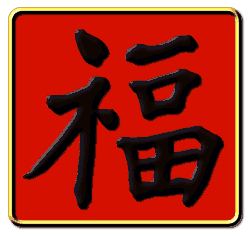
One of the most widely seen Chinese characters is 福 fú the character for good fortune or luck. You will see it painted everywhere: on wind chimes, paintings, lanterns, pots and posters. A look at its origin gives a feel of the complexity and longevity of symbols in Chinese culture. It represents the God of Fortune (Fu) who is part of the good luck trinity of Fu, Lu and Shou (Good luck, Prosperity and Long life) .
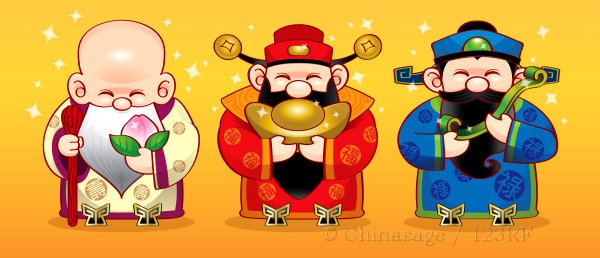
The character for good fortune has the radical for auspicious or heaven sent to the left. The right-hand symbol represents a full container and is an ancient form known from oracle bones. The character is usually written in black or gold ink on lucky red paper and is also often made as a paper-cut. You can also see the character as part of the name of Fujian province (福健). It was a tradition for the Qing emperors to give a personally painted ‘Fu’ character as a gift to visiting embassies and delegations.
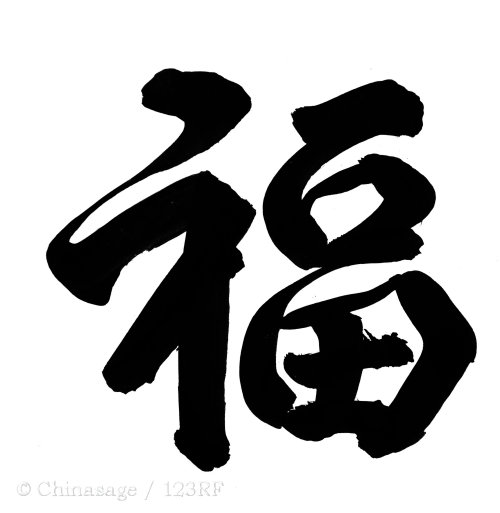
Good fortune descends from above
Fu is widely seen on Chinese New Year posters. In many cases the poster is deliberately hung upside down. This needs a bit of explanation as there are several stories explaining how this came about ➚. Firstly if you look at the character fu there is a vague resemblance to the character for upside down dao. The character dao can mean both 倒 dào upside down or fall and 到 dào arrive only differing in spoken tone. Combining the meaning of dao and fu gives the idea of good fortune raining down from the heavens. So placing fu upside down is seen as increasing the chance of good fortune descending. It may also have something to do with bats (see following) that sleep hanging upside down. All this is somewhat similar to the European custom of horseshoes which is a symbol for good luck one way up but if placed upside down it is an ill omen as the luck falls out of the horseshoe.
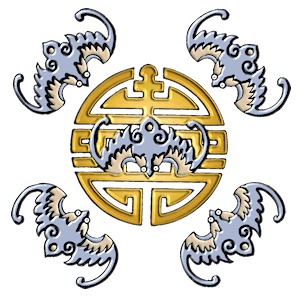
Bats wishing good fortune
The Chinese people love puns. Another character that is pronounced the same way as fu (in the Beijing dialect) is fú 蝠 for bat. So drawings of bats in a design bestows a wish for good fortune. The character consists of fù 富 wealth with the radical chóng 虫 for insect - as bats eat insects. The good luck motto 蝠子天来 Fú zǐ tiān lái (literally ‘bats come down from the sky’) which means ‘let good fortune rain down on you’.
Five bats in a design represent the five lucky gods and the five blessings: long life, wealth, health, virtue and a peaceful death. The central bat is placed on top of another widely used good luck symbol, this is shòu 寿 the symbol for the god of longevity Shouxing.
Here is another design including a bat in a less obvious way. Beneath the bat dangles the “endless knot” a Buddhist symbol ➚ for long life, eternal love and friendship. For more on bats see our Chinese symbolism section.
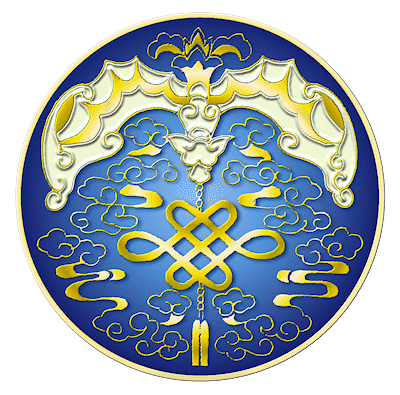
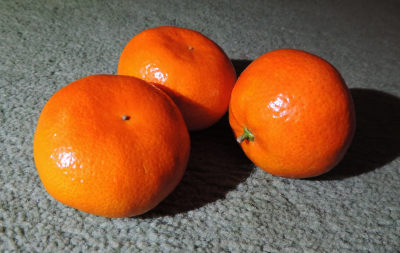
Lucky tangerine oranges
You may see lots of tangerines at Chinese New Year, and this is another play on words. The similar looking character for tangerine is ju 橘 but in the Guangdong area it is pronounced the same as fu 福.
Imagination has created many artistic versions of the good luck character. Some of the designs are based on the ancient seal form of the character. Here are a few examples.

The fourth version above has the ‘fu’ element on its own.

The first version above is an example of the character upside down. The fourth is of ‘fu’ on its own.

The first and third versions above have the ‘fu’ element on its own.
For a video of how to write the character fu as calligraphy please see the following You Tube video.
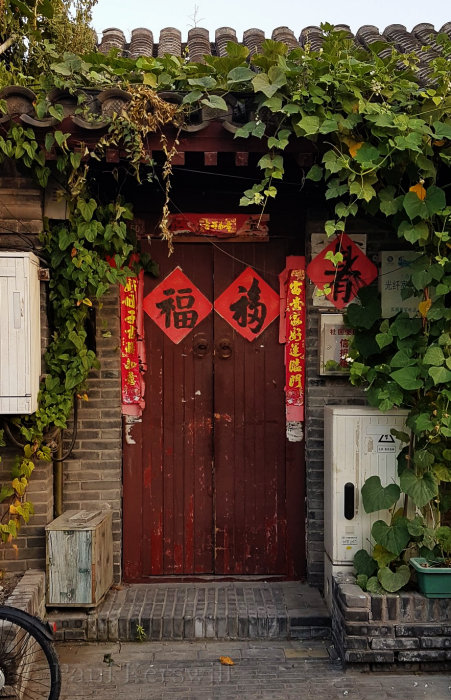
Gladness 喜 xǐ
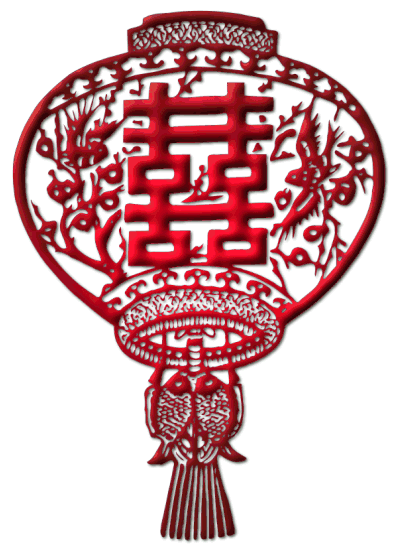
In addition to the symbol for good fortune, another widely seen character to wish for good luck and happiness is Xǐ. It is a representation of a ‘drum’ and a ‘mouth’ suggesting a celebration. Two xi characters joined together form the ‘double joy’ symbol seen particularly at marriages. The character crops up in many two character wishes including 有喜 yǒu xǐ ‘have joy’ usually given to a couple expecting a child. We have a guide on how you can easily make a paper cut of the double happiness character.